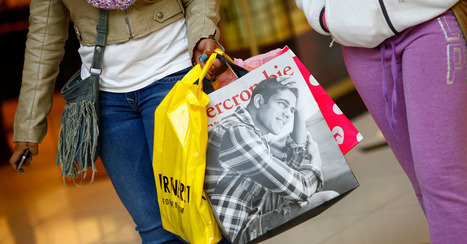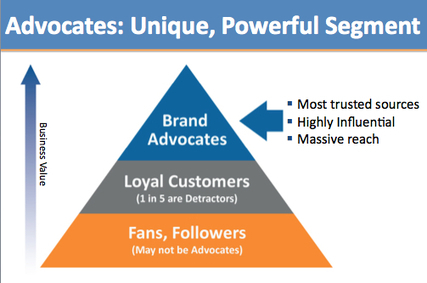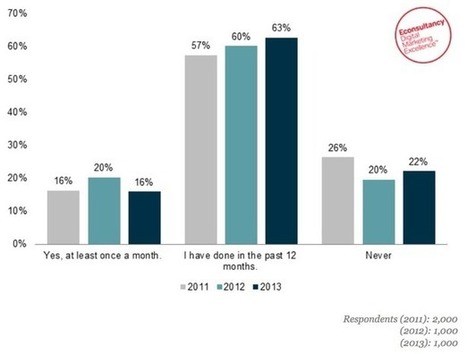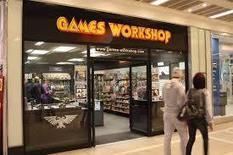 Your new post is loading...
 Your new post is loading...
Smartphone savings programs, in-store Wi-Fi, and better customer service are some of the ways offline retailers are leveraging their advantages.
E-commerce businesses have upended the retail industry and put bricks-and-mortar companies on the defensive.
But now, many offline retailers are moving to capitalize on their offline advantages. Retailers are actively harnessing a trend that's actually far more popular than online buying, and always has been — 'reverse showrooming' — when people research products online and then ultimately buy in-store....
By now you probably got the memo that the population in Europe is growing older. That the opening of borders is causing people to migrate. That consumers are using the internet and their mobile phones to make sure they get the best deal possible.
The way retail customers get their information is changing. Here's how one company helps them make the most informed decisions.
The retail landscape is as competitive an environment as any in the business world. Retailers regularly explore new and innovative ways to attract consumers' attention and stay one step ahead of their rivals.
Above and beyond any traditional methods of luring customers, advancing in-store technology has become a clear standout. Whether it's LCD screens or LED panels, touchscreens, gesture-based software, or 4D projection, retailers now have a plethora of options when it comes to delivering content to consumers through digital installation. Of course, none of these options would be useful in today's world if they didn't have the ability to seamlessly integrate with a consumer's social-media applications and deliver a customized shopping experience....
The retail industry is hiding behind the showrooming threat, but the real problems may run deeper.shopping at a store, isn't really the huge threat to traditional retail that it is made out to be.
The ravages of showrooming may in fact be more reflective of traditional retailers failing to provide a good service or experience.
In a new BI Intelligence study on "reverse showrooming" — online research that leads to in-store purchases — we discovered plenty of data suggesting that shoppers often prefer to shop in-store, if the right barriers are removed. Here's what the evidence suggests about what really drives people away from shopping in-store....
While many consumers are looking for the best deal, not everyone buys on price alone, new research shows.While many consumers expect to get a deal or discount, others are willing to pay more, provided other needs are met, according to a study by Experian Marketing Services, a provider of integrated consumer insight, targeting, data quality and cross-channel marketing.
A store's environment, the brands it carries, convenience and service all were deemed more important than price for the majority of consumers surveyed. In addition, nearly 40 percent of U.S. consumers are unlikely to change their behavior as the result of a discount. John Fetto, senior analyst, marketing and research at Experian, said it is critical that marketers know which customers want a deal or need a deal, and which outright rejects them...
And to leverage mobile, they need to stay human...
In the physical world, retailers have become quite adept at following the relatively faint tracks shoppers leave in their stores, primarily through their participation in loyalty schemes. However, in most cases this data is leveraged only after shoppers have paid at the register. Retailers can’t tell what shoppers looked at but didn’t buy, or whether they forgot something that they likely needed. Digital engagement gives e-commerce sites a huge advantage. Shoppers leave digital footprints across websites, mobile apps, and social media. Innovative sites also leverage analytics to optimize the experience.
But mobile shopping also represents a rapidly growing share of e-commerce, accounting for more than 20 percent of e-commerce sales this holiday season. And mobile provides a unique opportunity to help physical retailers compete....
According to the research survey, 62% of U.S. consumers join retail brand loyalty programs to get discounts but only 36% have received a reward or promotion from the program that actually made them come back to the brand. One reason might be the fact that, according to the survey results, 81% of brand loyalty program members don’t understand the benefits they’re supposed to get from the program or how the program works at all.
Brand loyalty programs can provide a lot of benefits to marketers but the more the program is customized for each customers needs the better chance of success.Loyalty is different for each customer. The key is to provide enough loyalty experiences that your best customers are appreciated. As we all know, the 80-20 rule holds true for most retail and restaurant businesses. Find those 20% and figure out what makes them loyal, get to know them. Acknowledge different customers by basing your loyalty program on services that you provide each time they visit. Give your customers something to work towards by offering a tiered program where the best customers receive more points per purchase in appreciation for their long-time support of your business....
In an empowered age, people are exhibiting dramatically new habits in the way they become aware, consider, buy and advocate. These new habits supplement and do not necessarily in the near term replace the ways they traditionally evaluated and bought products and services. However, in time, we anticipate that these new behaviors are likely to become dominant.The three biggest shifts are enhanced expectations, connected experiences and self marketing.A simple example of a company that has both fueled and benefited from these shifts is Amazon. They both have created and responded to peoples expectations for speed, value and service, seamlessly connected all aspects of the “marketing funnel” and fed a habit of us marketing to ourselves as we search, evaluate and comment on products and services. Today 30% of all e-commerce searches start on Amazon versus only 13% on Google....
Almost two-thirds of consumers (63%) have bought products online before collecting them in-store at least once in the past 12 months, while 16% use reserve-and-collect at least once a month.
Overall around a fifth (22%) of consumers said they have never used the service, which is actually a very slight increase compared to 2012 when the figure stood at 20%.
Even so, the data highlights the continuing importance of reserve-and-collect services for multichannel retailers as a sales tool. The Multichannel Retail Survey, conducted using the Toluna survey tool, also found that 50% of respondents had abandoned a purchase online due to unsatisfactory delivery options....
What do you do when you have a problem with a brand’s product or service?You go online, right?
You’re not alone. Close to six in ten (57 percent) of customers search for a solution online before taking any further action, and they’re increasingly reaching for a brand’s social media outposts. Almost half of social media users (47 percent) have received customer care on a channel such as Twitter or Facebook, and 37 percent now prefer customer service through social media rather than by telephone.
But brands still have work to do. While 80 percent of Twitter users expect a response to a consumer service enquiry within a day, just 40 percent of tweets to the 25 largest online retailers are answered within 24 hours, and many are ignored altogether....
Brands like Amazon, Netflix, OKCupid, Pandora and Twitter are tracking customers’ online behavior to produce targeted offerings and increase sales. What stats are they looking at and offering as a result, you may ask? This infographic tells all....
‘We beat internet prices’ – good or bad marketing slogan? According to Forrester analyst Adam Silverman, such claims are ‘antiquated and add little value to customers’. “Instead of simply stating you beat your competitor’s prices, employing strategic pricing and customer engagement initiatives creates real distinct value to your customer,” he said.
|
There is a major gap between what consumers expect and what retailers are providing them, according to a new study released today, with 94 percent of retail decision-makers surveyed saying that their companies are facing significant barriers to omni-channel commerce.“Customer Desires Vs. Retailer Capabilities: Minding the Omni-Channel Commerce Gap,” from Accenture and hybris software, an SAP company, peels back the onion to reveal that the difference between the omni-channel ideal and what retailers are currently able to achieve for customers is vast...
James Surowiecki's column in The New York last week, Twilight of the Brands, seemed to suggest that brands are dying. He argued that the usefulness of brands as decreased given that "consumers are supremely well informed and far more likely to investigate the real value of products than to rely on logos.
"His observations about people’s orientation and decision-making are spot on – but I come to a different conclusion. Instead of seeing the current market environment as ushering in the “twilight” of brands, I view it as a call to arms. Brands and brand-building are more important now than ever before.I hold this different – and hopefully more instructive and insightful – perspective because I view a brand as far more than a label or logo.
A brand is the bundle of values and attributes that define the unique value an organization delivers to customers and the unique way the organization operates. A brand is a strategic platform for managing and growing a business....
Shoppers today aren’t just pleased to shop with retailers who offer several ways to buy stuff—they expect it. In fact, former nice-to-haves (like an easy-to-access storefront, a ecommerce-enabled website and a mobile shopping app) are now becoming table stakes for Canadian store operators.
This is one of the key takeaways of a new survey of retail expectations conducted by PwC.
The survey polled more than 15,000 consumers (located in Canada and around the world) to get a sense of what, exactly, today’s shopper wants when opening his or her wallet. According to a report detailing the research, “the bar is now much higher for retailers with world-class aspirations.”
This is not exactly news to any retailer struggling to compete in 2014. Changing customer expectations have made it extremely difficult for store operators—especially independents—to thrive. So, what is the solution? In PwC’s view, “a new approach is needed, and retail customers are pointing the way.”
Here are the four key things PwC believes consumers want today—and some tips on how your business can adapt to them....
We live in the world where online shopping has become a new way for us to purchase items from electronics to books, travel coupons to cookware and clothes to beauty products. Online shopping has basically changed the way we live and has made life much simpler and convenient. It is a fact that most of the internet users have made at least one online purchase and this is enough to stress on the popularity of this phenomenon...
A study of the free shopping apps in the Android Play store shows that the most popular apps fall into the broad categories that one would reasonably expect without pushing the limits of imagination: pure play e-commerce, brick-and-mortar retailer apps, coupons & deals, utilities (shopping lists, product scans, loyalty storage) and rewards for shopping behavior [see list at bottom of post]. In general, the most popular shopping apps are not revolutionary in terms of offering consumers a compelling shopping experience that they can’t find elsewhere.
As a result, fewer than 50% of consumers who download the most popular mobile shopping apps are developing regular usage habits. A recent NPD study showing that within 3 months of downloading a retailer’s app, 75% of consumers stop using the app even once a month. The same study shows that more consumers use retailer web sites than apps (71% of consumers vs 57%), perhaps indicating they prefer accessing a retailer’s website on an irregular basis than going through the trouble of downloading a mobile app.
One of the reasons for the lack of regular usage of top mobile shopping apps may be that the majority take a conventional shopping task focused view of a person’s motivations & intentions for using a mobile app, eg. “the user wants to purchase something specific/find coupons/compare products”. Very few take a time-based view of a person’s motivations & intentions for using a mobile app, eg. “the user has many small moments of downtime in the day that they’d like to fill with an engaging app experience”....
Email is losing its power as a marketing tool for online retailers, according to senior-level executives at Gilt Groupe and Rent The Runway.
Fewer consumers are opening promotional emails, especially since Gmail added a new setting in August that automatically archives promotional messages into a tab separate from users' inboxes, executives said.
"I think everyone would probably agree that email, even before the shift with Gmail, was becoming a less and less powerful channel," Jennifer Fleiss, cofounder and president of Rent The Runway, said at Business Insider's Ignition 2013 conference....
As consumers grow more accustomed to speedy online deliveries, eBay is hoping to exceed consumer demand. To accomplish this, the auction giant just acquired Shutl, a marketplace that uses a network of couriers to deliver local goods on a same-day basis.
According to Devin Wenig, president of eBay Marketplaces, consumption on the auction network has shifted strongly toward local purchases, probably as a result of eBay Now, a service released last October that lets shoppers order products from local stores and receive them in as little as an hour.
“Today, approximately 75 percent of what people buy is local, found within 15 miles from their home,” said Wenig. “Traditional retail isn’t going away. But it is transforming, and that creates enormous opportunity within the $10 trillion total commerce market.”...
Back in the day when you wanted to buy a new pair of pants, you had to flip through magazines for inspiration, then visit a store and buy the jeans. This process evolved into flipping through a magazine or reading a blog for inspiration, and then looking for the pair of jeans that you want in an online store.
Now however the desire to buy something might just strike you at any given moment in time. Therefore, brands need to reach consumers directly – wherever they are, in any context.
Your device has become an online portal that takes you one step closer to making the purchase that you are thinking of. Your device is the bridge between physical and digital interaction. SOME argue that the emergence of digital will render physical retail obsolete. Some might even go so far to already proclaim the death of retail. But retail is actually more alive than ever. STUDIES even show that in-store digital marketing technologies increase brand engagement and open up new avenues for customer interaction....
Recent research from the Centre for Retail Research (CRR) predicts that one in five retail stores on the high street will close in the next five years – in addition to the ongoing shop vacancy rate of 14.1%. But there's signs that the future doesn't need to be all about reducing store or staff numbers to boost finances.
Many retailers are adapting their model to shoppers’ changing habits and desires - taking advantage of technology to improve the instore experience and improve profitability. In doing so, they may be inadvertently reshaping the role of bricks and mortar shops....
The BBC's Jill Martin visits US clothing company Lolly Wolly Doodle, which is helping to lead the way in selling directly through Facebook.
As a family-run company with just 160 employees and a funny name, US children's clothing manufacturer Lolly Wolly Doodle (LWD) does not immediately seem like a trendsetter.Yet the North Carolina firm and its owner Brandi Temple are at the forefront of how small retailers are increasingly selling their wares directly through Facebook.
Billionaire investor Steve Case, the co-founder of US internet group AOL, is so impressed with LWD and its "Facebook commerce" business model that earlier this year his Revolution Growth fund invested $20m (£13m) in the company.
He says that LWD has the potential to be a billion-dollar business.Mr Case adds: "Ms Temple really had pioneered the whole area of social shopping. It's really bringing consumers almost into the design process."For most people focused on e-commerce, social is an afterthought. For her, it's the main event. I think that's unique."...
When it comes to selling luxury via social media, some brands are far more artful than others, according to a new analysis of social-media platforms from L2’s latest report.
The report ranked some 250 prestige brands across 15 social media platforms. Swarovski is batting a thousand and present on all of them, followed by fast-fashion chain Uniqlo, active on 13. “Prestige brands are present on an average of seven platforms, with 15% on 10 or more,” writes Scott Galloway, professor of marketing at New York University’s Stern School and founder of L2. “Brands are still searching for the right balance between promise and performance and, as costs increase, will likely pare down the number of platforms they invest in.”...
61% of customers read online reviews before making a purchase decision, and they are now essential for e-commerce sites. User reviews are proven sales drivers, and something the majority of customers will want to see before deciding to make a purchase. Here are some compelling stats on user reviews, why they are great for SEO, why bad reviews are valuable, and how to use reviews in navigation and on product pages...
|



 Your new post is loading...
Your new post is loading...








































Cool ways technology is helping enhance consumer experience in brick and mortar stores.